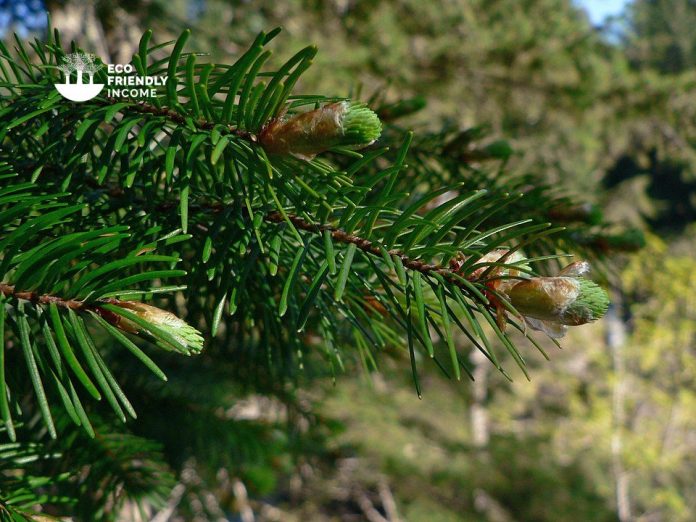
Featured Photo by Walter Siegmund / CC BY 2.5
A field guide on how to identify and propagate Douglas Fir (Pseudotsuga menziesii), a hardy tree that is native to western North America.
How to Identify Douglas Fir (Pseudotsuga menziesii)
Leaves
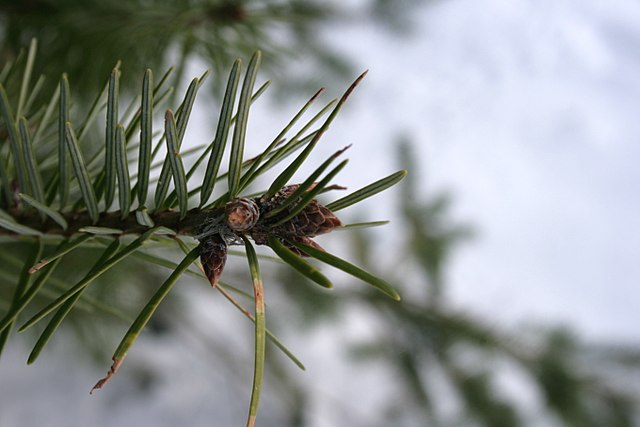
Douglas fir needles are linear-shaped, with entire margins (smooth), and they grow on the stems in alternate arrangements.
Like other fir species, the needles are quite flat. If you were to pinch one between your fingers, it would be difficult to roll it.
Bark
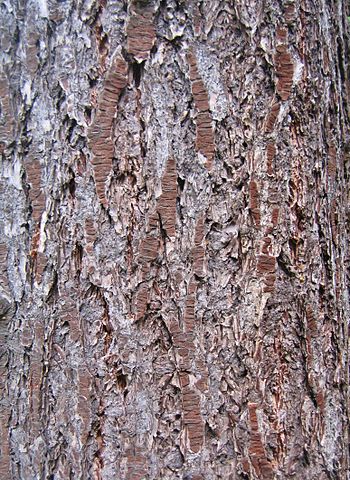
When you see a young Douglas fir tree, its bark is gray and has bumps called resin blisters, just like true firs.
As it grows older, the bark becomes thick and deeply furrowed, making it easier to recognize compared to other trees in the area.
The color of the bark ranges from gray to brown and is often brown in the furrows.
Cones
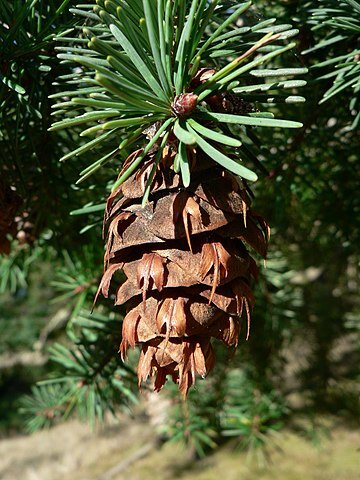
The cones of the Douglas fir are special because they have three-pointed bracts that stick out of the scales, which you won’t find on other trees in the Northwest.
They also hang down from the branches instead of standing upright, and they fall to the ground whole.
If you find these unique cones on the ground, it means a Douglas fir is nearby.
In the spring, you’ll also see tiny pollen cones which are released and fall, often covering the ground below the tree.
Flowering Season
Young cones appear on the trees in spring and mature by the end of summer.
It takes a tree at least 20 years of age to be able to produce cones.
Habitat
The Douglas fir is a beloved tree in Oregon and is so abundant that it is even the state tree!
It grows in the western part of Oregon and Washington, as well as some areas east of the Cascades.
This type of tree loves the sun and can’t handle too much shade.
It’s a resilient species and can regrow from its seeds on burned or cleared land.
Some other understory plants that associate with Douglas Fir are:
- Vine maple (Acer circinatum)
- Thimbleberry (Rubus parviflorus)
- Beaked hazelnut (Corylus cornuta)
- Salmonberry (Rubus spectabilis)
- Vanilla leaf (Achlys triphylla)
- Boxwood (Buxus spp.)
- Elderberry (Sambucus spp.)
- Huckleberry (Vaccinium spp.)
- Rhododendron (Rhododendron spp.)
- Serviceberry (Amelanchier spp.)
- Ocean spray (Holodiscus discolor)
- Pacific dogwood (Cornus nuttallii)
- Salal (Gaultheria shallon)
Wildlife Value
If you love wildlife and nature, you might be interested to know that Douglas fir trees play an important role in the ecosystem.
For starters, these trees offer a nutritious food source for small mammals like chipmunks, mice, shrews, and red squirrels. Even bears love the sap of Douglas firs.
When it comes to birds, many songbirds feast on the seeds from the cones and larger birds, like northern spotted owls, use the trees for cover.
But the real star of the show is the red tree vole, who relies almost entirely on Douglas firs. These little rodents create their nests in the crowns of the trees and eat the needles for sustenance. They even drink water by licking moisture off the needles.
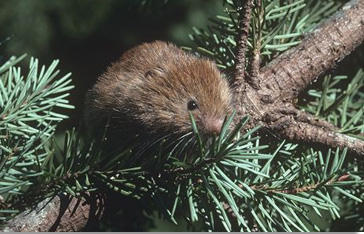
How to Propagate Douglas Fir (Pseudotsuga menziesii)

Hardiness Zone: 4-6

Soil Type: Acidic loam, sand.

Water: Normal

Exposure: Full Sun
You can propagate douglas fir with two methods:
- Stem Cuttings: It provides established trees faster, but is tricky, and will probably have a lower success rate.
- By Seed: The success rate is high but takes longer to get established saplings.
Since the success rate is much lower with cuttings (roughly 15%), you’re much better off just going with seed.
Let’s take a look:
How to Propagate Douglas Fir (Pseudotsuga menziesii) by Seed
Personally, I love the idea of harvesting the seeds myself to ensure their freshness. And if you’re lucky enough to have Douglas Firs growing nearby, you can easily gather the seeds yourself.
But if not, don’t worry, you can still order them online at treeseeds.
How to Harvest Seeds
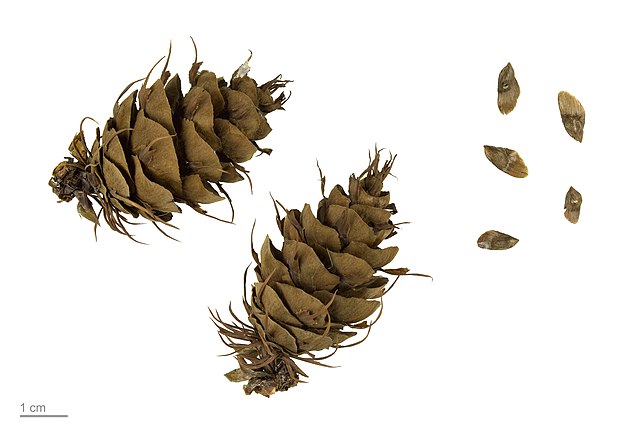
If you want to collect Douglas fir seeds, you have two options for when to harvest them.
One is at the end of summer, and the other is mid-winter.
If you collect the seeds during summer, you’ll need to give them a cold stratification treatment. But if you collect them in mid to late winter, nature has already taken care of the cold treatment for you.
To harvest the seeds, simply gather the cones and put them in a brown paper bag in a dry place. The dry environment will cause the cones to open, allowing you to easily collect the winged seeds.
Stratification & Sowing
Here’s how to stratify Douglas Fir seeds:
- Put the seeds in a labeled bag with moist sand and store them in the freezer for 21 days.
- Remove the bag from the freezer and let it sit in room temperature water for 12 hours.
- Place the bag into the refrigerator for another 7 days.
- After this process, the seeds will be ready to plant.
Alternatively, you can skip stratification by planting the seeds outside in the fall or harvesting cones mid-winter.
To germinate seeds indoors, sow them in a peat moss medium, moisten the medium, and cover it with a wrap.
In about a week, the seeds should start germinating.
FAQ
Q: Is douglas fir a true fir?
A: It’s neither a fir, nor a pine, nor a spruce, nor a hemlock. Actually, it took quite some difficulty to correctly name the tree. It was given its own family name, Pseudotsuga in 1953, ending the debate.
Q: Does Douglas-fir grow in Canada?
A: Yes, it’s found growing naturally in the southern part of British Columbia, especially in the rocky mountain range.
Q: Where does Douglas-fir grow best?
A: The Douglas-fir tree thrives in deep, well-drained soils. It won’t grow well in poorly drained or compacted soil. On the coast, you’ll mostly find it growing in areas where fine-textured soils have formed from weathered marine sandstones and shales.
Q: What is the difference between a Douglas-fir and a Fraser fir?
A: The Douglas Fir tree has slightly longer needles than the Fraser Fir and its needles are soft and green.
